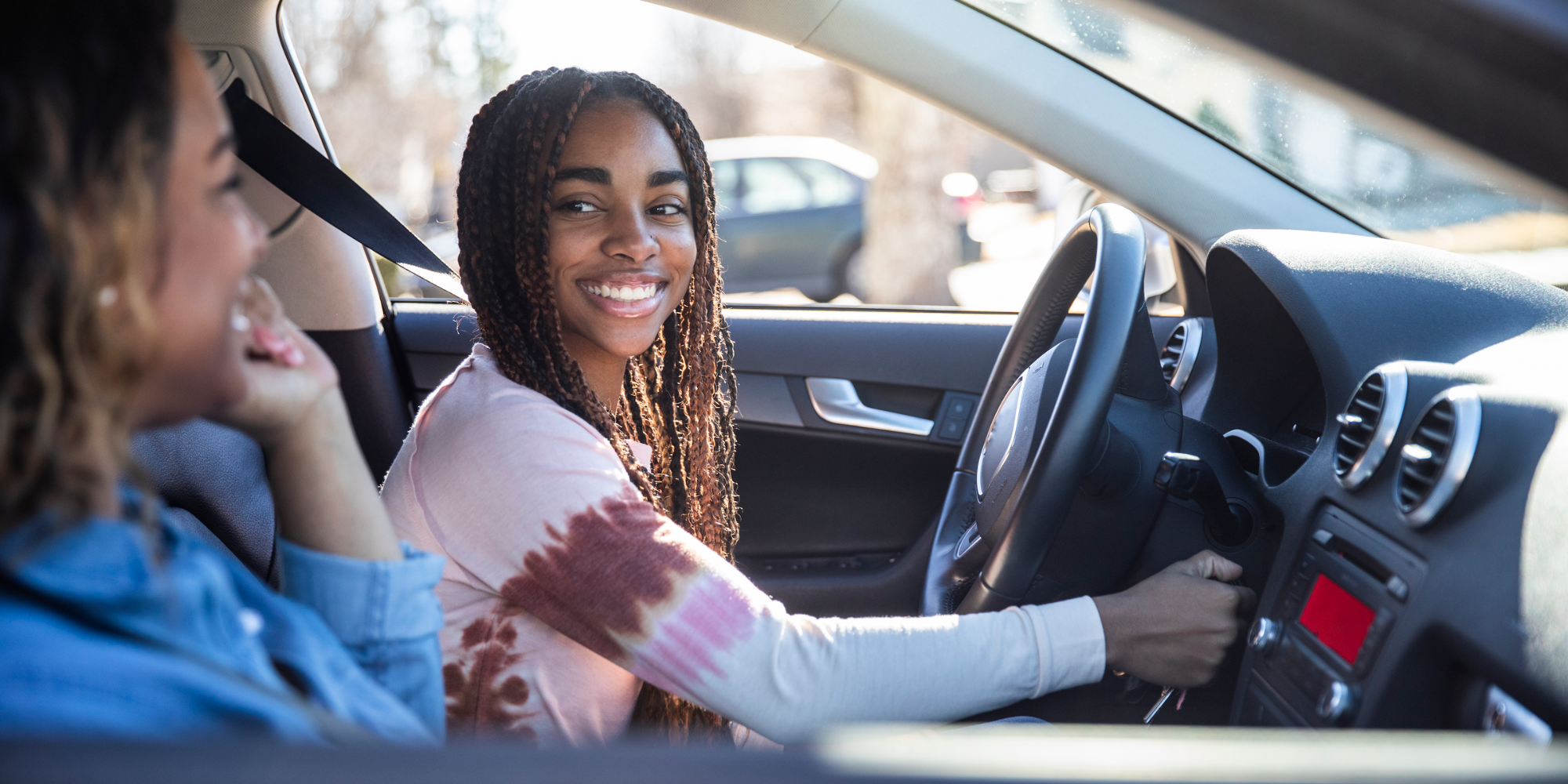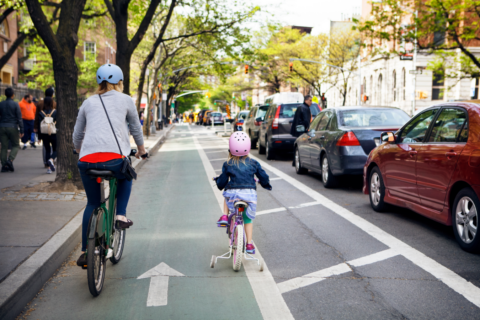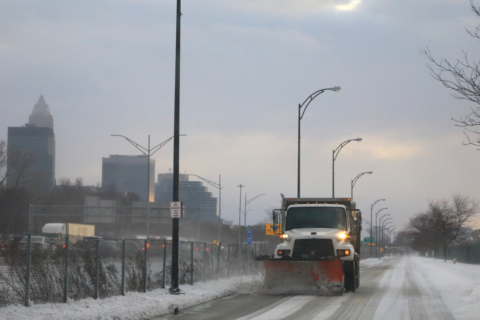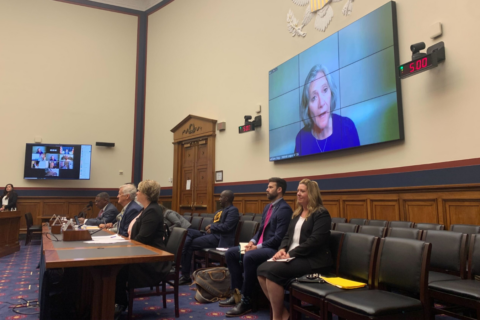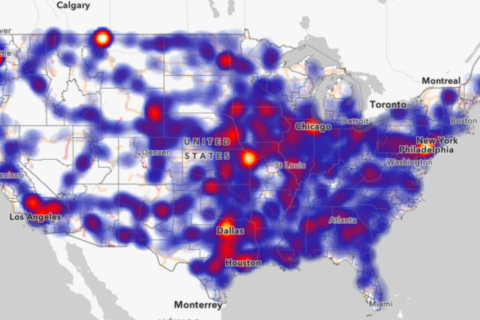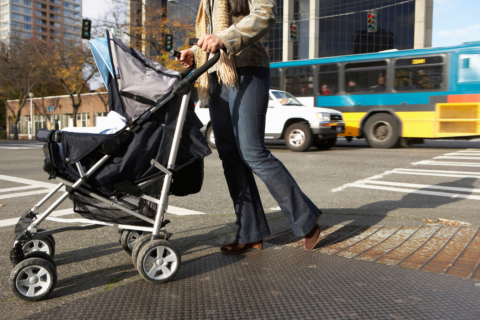America loses over 100 people each day due to traffic accidents. Traffic-related injuries and deaths especially impact America’s youth and are the number one cause of injury for those aged 15-24.
Cities, towns and villages nationwide are applying for Safe Streets and Roads for All grants and adopting road safety initiatives like “Vision Zero” to work towards a future with no traffic-related deaths. Young people are organizing and advocating for safer streets and joining local government efforts, adding energy and perspective.
To create awareness of the prevalence of road accidents and to highlight the power of youth advocacy, NLC’s Safety First Challenge cohort hosted a conversation on how to engage youth in safe streets work with the National Organization for Youth Safety (NOYS) and the Safe Routes Partnership. The meeting featured several youth leaders including Vision Zero for Youth, the Badger High School Chapter of the Family, Career, and Community Leaders of America (FCCLA), and the National Youth Bike Council. These youth organizations work to encourage elected officials and other community members to focus on reducing traffic-related deaths and injuries.
Here are five key takeaways city officials can use to collaborate with young people on road safety:
- Meet with your local youth elected officials and organizations. Many municipalities have youth seats on their city council, committees and boards. Also seek out chapters of youth-led organizations like the National Organization for Youth Safety, the National Youth Bike Council, the Vision Zero Youth Council and FCCLA. Many middle and high schools have divisions of the National Honor Society, a volunteer organization of students dedicated to giving back.
- Bring youth voices into Vision Zero and road safety initiatives. Whether they travel by foot, bike, bus, or car, seeking out youth experiences will bring a unique perspective on the mobility and access of a new demographic of users. Ask direct questions, such as:
- “What’s the worst part of your journey to school?”
- “What’s your biggest pet peeve regarding your commute?”
- “Why do you like taking the train?”
- “What deters you from walking or biking?”
The city of Bellevue, WA, took this collaborative approach to working with students and young people. In 2019, the ‘Tune In, Not Out’ (TINO) education campaign was done with the city and students in DECA, an entrepreneurship and community service organization, at Interlake High School. The focus of the TINO program was to reduce distracted driving among teenagers, with the goal of becoming a Vision Zero city by 2030. Learn more about Bellevue’s success in creating safer streets for all.
- Host a day of youth and community education and action. October is National Pedestrian Safety Month, and the US Department of Transportation has compiled a resource of their Everyone Is a Pedestrian campaign in both English and Spanish to share. October 4 is National Walk, Bike, and Roll to School Day, promoting pedestrian mobility with students in grades K-12. In 2021, 65% of Walk to School Day event organizers showed that their event led to policy or engineering changes in their community. Find out if the schools in your area have joined here.
- Work with your local hospital to understand how many young people are involved in vehicle-related accidents in your community and find your high injury network (HIN). A high-injury network is a map of corridors that experience severe injury or fatal collisions. In the city of San Francisco, where the HIN analysis originated in 2013, it was found that 12% of city street miles contributed to 70% of severe injuries among road users. The tool was also used to aggregate the demographics of victims and trends in the concentrations of high-injury intersections. This data was compiled through partnerships with local hospitals, their Department of Public Health, the police department, and the Chief Medical Examiner. Explore San Francisco’s HIN map here or watch leaders from San Francisco’s public health and transportation departments discuss the development of their tool here.
- Conduct a road safety audit near the schools in your city. A road safety audit (RSA) is an opportunity to bring stakeholders and policymakers together to think about road safety issues and improvements. Unlike a traditional safety review, RSAs consider all the users of the road, not just the cars that occupy it. RSAs have been a useful tool in lowering speed limits and adding stoplights at crosswalks in between middle and high schools in Lake Geneva, WI, a process led by students.
Young people inherit the challenges and successes of the world they are born into, and the next generation can be a great partner in creating the future they will experience. Joshua Funches, President of the National Youth Bike Council is passionate about young people being actively recruited and included in the conversation about road safety. His advice to leaders in the safe street spaces was simple: support and credit the efforts and actions of youth people, take part in youth advocacy efforts during events like the Youth Bike Summit, and invest in the future generation of road safety advocates, both with time and attention and financial investment in their work.
Take the Next Step
For more insight on youth engagement, watch our conversation on how to engage youth in safe streets work the video below.
For help navigating conversations on youth advocacy in the safety space, contact Jacob Smith, Executive Director of the National Organization for Youth Safety (NOYS), at jsmith@noys.org.
JOIN US: Think your town can rise to the challenge? Join cities like Toledo, OH, Santa An, CA, and Greensboro, NC in the fight for road safety by signing up for the Safety First Challenge here.
About the Authors:
Ndemazea Fonkem and Mira Schwadron are interns in Federal Advocacy at the National League of Cities.
